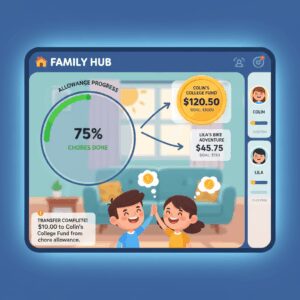
You’ve worked your whole adult life and paid into Social Security all the while eagerly looking forward to your golden years and how you will have all you need to enjoy that well deserved time. However, now you are now either ready to retire or have retired and are finding it difficult to make ends meet.
It’s frustrating, of course it is! But, today we’ll examine ways in which we can stretch that social security check as well as consider other ways in which we can try to make ends meet.
Maximize Social Security Benefits
If you are a couple to a few years away from retiring, you can begin to maximize your social security check right now.
Full Retirement Age (FRA): The Social Security Administration (SSA) considers two things when calculating your benefits: the age at which you retire and what your “average indexed monthly earnings” are at the time you apply for these benefits. The benefit you’ll receive each month is calculated by using the data gathered from up to 35 years of your earnings.
Visit the SSA website to review your earnings records as well as what SSA determines to be your suggested retirement age, (which is different from your FRA) and what your payments will be. If you retire early, your benefit will be reduced and will not increase once you do reach FRA. So, it might make sense to wait before applying for benefits if you have not reached your FRA.
If you have not reached your FRA but have started receiving benefits, you can continue working, but you must not pass the ceiling for income as imposed by the SSA. Passing that limit will lower your benefit $1 for every $2 or $3 you earn. However, the deductions will end upon reaching your FRA. SSA will then review your account and take into consideration the months your benefits were lowered when figuring out your new benefit amount.
You can also pause your benefit payments for up to one year. While in pause mode, you can earn delayed credits for each month your account has been paused. Note: When you pause your account, you will have the added responsibility of paying Medicare and Medicaid premiums.
Budgeting: Visit Senior Lifestyle for more tips on budgeting as a senior citizen. Some of them include:
- Knowing What Your Expenses Are: Once you are retired, your expenses will be between 70 and 80 percent of what they were while you were working. For example, if your monthly expenses were $1,000 per month while employed, you can expect to spend about $700 to $800 per month post-retirement To prepare, compose a list of your repeating expenses like utilities, mortgage/rent, car payments, insurance payments and the like. Subtract that amount from what your retirement income will be and that leaves you with a balance each month to spend or save as you like. Keep to your budget to avoid any financial issues.
- Thinking About Taxes: There are two things that are certain in our world: death and taxes. As a senior citizen, you are still responsible for paying taxes. Work with a financial planner to help organize your finances, figure out how much you are responsible for and put together a savings plan so that you don’t fall short and have to use a payment plan with the IRS.
- Consider Downsizing: If you are of a certain age, where your children are grown and have moved away either to pursue a career or to start families, consider selling your large family home if possible and move to a smaller, standalone home that you can leave your heirs who can then build on generational wealth, or move to a senior citizen community that offer all sorts of amenities aimed at serving senior citizens. The site, A Place for Mom, offers assistance in choosing a senior living community. Just enter the location you are interested in, answer the questions and finish by entering your email address. They will send a list of options to you.
- Reverse Mortgages: Known as a Home Equity Conversion Mortgage (HECM), a reverse mortgage is a loan that senior homeowners (age 62 or older) can obtain, based on the equity of their home. This type of loan is just like a traditional mortgage in that your home becomes collateral for the loan, and the owner maintains ownership of the title. But there are major differences:
- There are no monthly payments to be made to your original mortgage. The homeowner can choose how to receive the money borrowed: as a lump sum payment, as regular monthly payments or any other payment schedule the homeowner and lender agree to.
- Repayment of balance is due when the borrower sells the home, moves away or dies.
- Stipulation: If you have a balance on your original mortgage, you must pay it however you see fit – whether it be with personal funds or funds from your new reverse mortgage at the time of its closing. In addition, you must not be in debt to federal taxes or federal student loans.
- This post from All Reverse Mortgage, Inc. explains, in simple terms, how a reverse mortgage works. Also, visit Best Money to see a list of reverse mortgage lenders, what they offer and what their ratings are.
Bonus: Below are a few ideas that don’t really need a lot of explanation that could help in reducing your expenses as a senior in their golden years.
- Find a roommate. Sadly, as we age we lose friends, partners and the like With a roommate, you’ll have companionship and help with monthly expenses.
- Get a part time job. This will allow you to make new friends and exercise your social muscle while making a little bit of money each month.
- Start an online store. This is an excellent way to bring in some extra cash and also learn something new! Shopify offers a free trial. Etsy is another good one to try as a newbie.
There are many ways a senior citizen can maximize their income while in retirement. These are just a few. Remember, you can have a relative stress-free post-retirement life. All it takes is a little research and commitment.
Unlock Full Article
Watch a quick video to get instant access.










